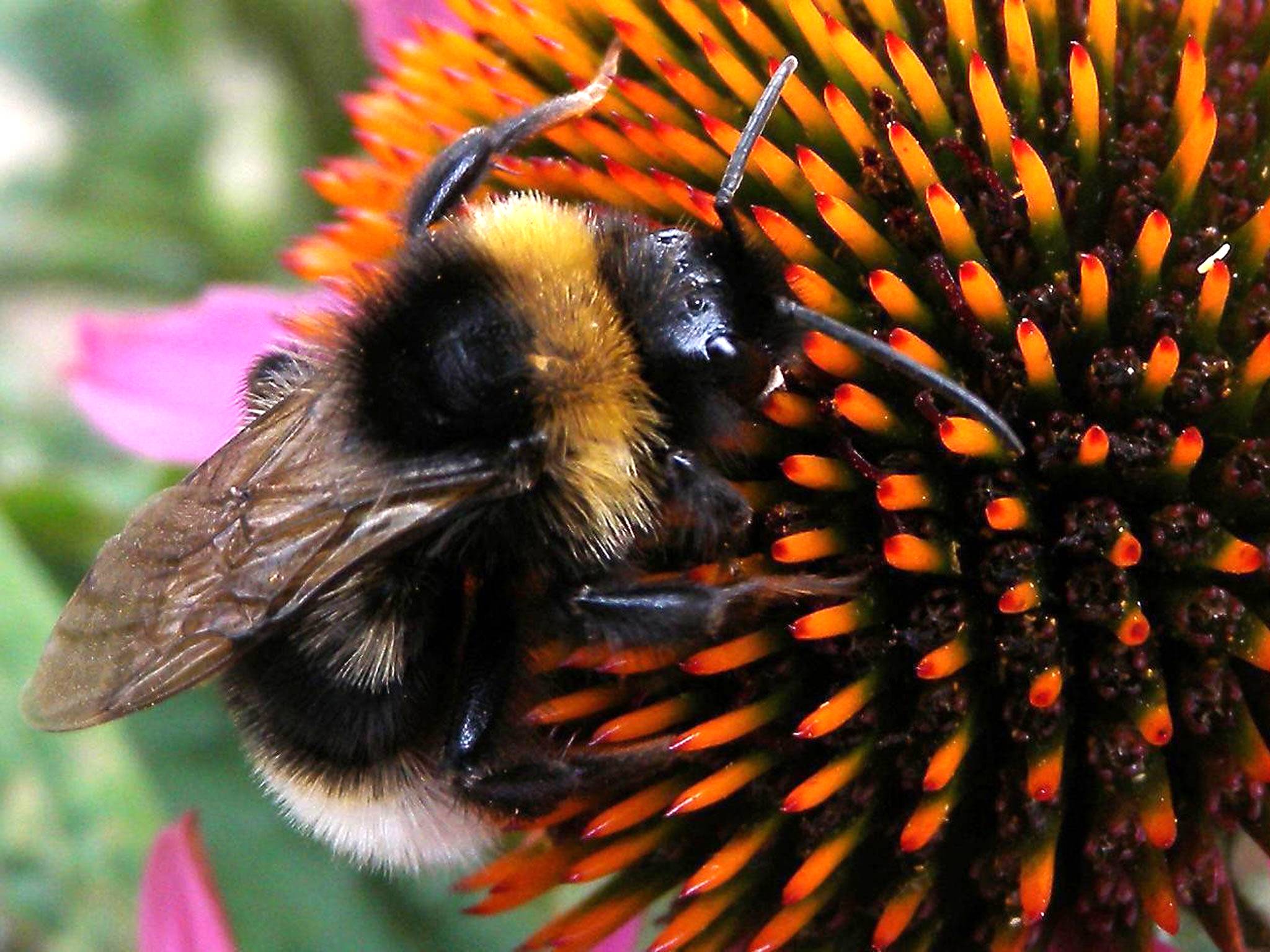Honey, I’m just popping out for some pollen. I may bee some time...
Insect forced to travel more than a mile to find food, study finds

Hungry bumblebees are being forced to travel more than a mile to find food, a study has found. Ecologists took samples from more than 3,000 bees from five different species and mapped how far they roamed from their nests.
The study, led by the University of East Anglia (UEA) in Norwich, found that while on average the insects would travel between 880ft to 1,800ft, bees nesting in areas where there were fewer flowers had to fly more than 1.2 miles. It is hoped the findings could help improve conditions for the vital pollinators.
Professor Andrew Bourke, a behavioural ecologist and evolutionary biologist at the university, said: “We hope that, by providing detailed insights into how bumblebees move around landscapes, our results will lead to improved interventions for bees so that wildflowers and crops can continue to benefit from their pollination services.”
Despite their size and conspicuous colouring, bumblebees have traditionally been difficult to study in the wild because their nests are almost impossible to find. But scientists from the Centre of Ecology and Hydrology (CEH), the UEA, University of Bristol and Institute of Zoology managed to take DNA samples from 2,577 worker and 537 queen bees. This information was used to group them into 2,000 colonies which were then mapped against the landscape to estimate how far they ventured from home.
Dr Matt Heard, of the CEH, said the research allowed scientists to “ask whether conservation schemes to improve the countryside for bees, like planting more flowers on farmland, are having a positive effect”. The next stage of the research will use mathematical models to produce a “bees’ eye view” of the landscape.
PA
Subscribe to Independent Premium to bookmark this article
Want to bookmark your favourite articles and stories to read or reference later? Start your Independent Premium subscription today.

Join our commenting forum
Join thought-provoking conversations, follow other Independent readers and see their replies